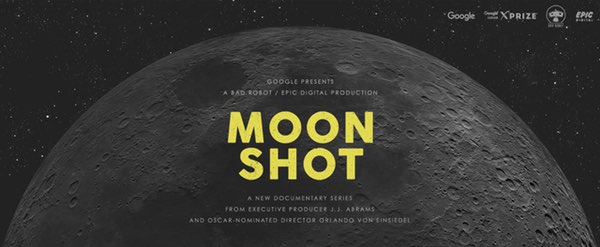Review: Moon Shotby Jeff Foust
|
| The focus of the short episodes is very much on the people involved, not the technology. |
In an effort, perhaps, to drum up broader public interest in the competition, Google funded the development of a documentary series about the competition and its teams. The result of that is Moon Shot, a series of bite-sized segments released last week on the Google Play store and YouTube, at no charge. While Google and X PRIZE played up the association with J.J. Abrams, director of recent Star Trek and Star Wars films, he served as executive producer; the day-to-day work on the series was led by director Orlando von Einsiedel, who directed the Oscar-nominated documentary Virunga.
Seven of the nine episodes, which each run for six to eight minutes, focus on individual teams. An eighth episode looks at a companion educational program, called Moonbots, through the eyes of a young Mexican girl. The final episode is something of a wrap-up, offering an opportunity for most of the rest of the remaining teams to make cameos (the one team of the remaining 16 that appears to be omitted from the entire series is Team Italia.)
The focus of the short episodes is very much on the people involved, not the technology. Other than the final episode, each one focuses on one, or at most a few, people involved in each team, telling their story in their own words, rather than that of a narrator. For example, the first one, about Astrobotic, is largely about Red Whittaker, the robotics pioneer who founded the company in 2007. One about Team Indus, an Indian team, focuses on one of its engineers, Deepana Gandhi, who describes the challenges she faced as a woman trying to earn an education, and seek a career, in a technical field.
The segments don’t discuss in detail each team’s specific plan for winning the prize: there’s little mention of lander or rover technology, selection of launch vehicles, or other elements critical to winning the prize. The hardware plays a secondary role, at best, in the series. In the episode about Moon Express, we see work on its lander only briefly near the end. Most of the episode is about one of its founders, Naveen Jain, and both his rags-to-riches story and his motivation for doing Moon Express: solving the world’s energy problems by returning helium-3 from the Moon. (Nevermind that fusion reactors that can use helium-3 are likely many decades in the future.)
That focus on people, rather than technology, is both a strength of the series as well as a flaw. The series makes clear that teams are motivated to participate for different reasons. While Jain has a vision of using lunar resources for energy, Japan’s Team Hakuto sees its rover as a first step towards eventual human settlement there, a hedge against calamities that threaten life on Earth, illustrated in that episode by the earthquake and tsunami that devastated regions of Japan five years ago. Israel’s SpaceIL, meanwhile, is motivated more by a desire to get students interested in science and engineering careers.
Such dreams, though, while perhaps necessary to enable these missions, are clearly not sufficient: otherwise, we would be zooming across the cosmos today. Far less is said about the technical and financial challenges the teams face that have slowed their progress over the years. The documentary doesn’t mention, for example, that the competition’s deadline has been extended several times. How seriously should we take someone like Canada’s Plan B, largely a father and his adult son working in a Vancouver condo who, even if they have the technical expertise, likely lack the fiscal resources needed for their rover?
| “Things that are worth doing,” Whittaker says in the first episode, “are usually tougher than they look and take whatever time they take.” |
Moon Shot, then, is much more about the vision of the Google Lunar X PRIZE than the substance. “If they succeed,” each episode’s opening credits state, “it will redefine what is possible.” That is true by definition, since no private entity has yet landed a spacecraft on the Moon. Whether they succeed or fail, though, will have little to do with their dreams and motivations that are at the heart of the series. No one doubts that everyone involved has a desire, and perhaps life-long dreams, to go to the Moon. What is less certain, though, and what is less explored in the series, is whether any of the teams can round up the money, and overcome the technical challenges, to get there.
There is always a chance that the competition’s deadline could get extended once again, giving teams more time to raise money and build their spacecraft. “Things that are worth doing,” Whittaker says in the first episode, “are usually tougher than they look and take whatever time they take.” The Google Lunar X PRIZE, in retrospect, was likely tougher than it looked when it was announced in 2007, and is taking longer than what they envisioned at the time. Moon Shot, though, shows that for Whittaker and others involved, it has not diminished their enthusiasm to achieve their dreams.
